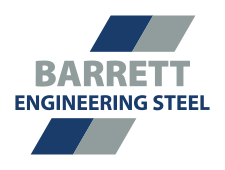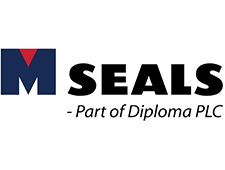HYDROVOLVE: Cutting Cost of Geothermal Drilling
Utilising a wealth of experience from the North Sea oil and gas sector, applying it to modern problems, and coming up with game changing innovations is the business of HydroVolve. Chairman Dr Peter Moyes tells Energy Focus more about unique tools developed in house that are expanding quickly across oil and gas, decommissioning, and geothermal.
Reaching the materials that life is based on is becoming more challenging as mineral deposits are deeper, scattered, and harder to bring to the surface. Whether it’s mining companies searching for rare earth minerals, quarrying businesses looking for suitable sand and stone deposits, or oil and gas companies developing wells that can produce at scale. People need these products – that is not in question, but developing assets responsibly, economically, and sustainably is the challenge.
Innovation is not only important, it is fundamental in the ability of business to achieve goals in the modern oil and gas industry, as well as other energy sectors, where traditional solutions no longer fit the challenge.
For those able to develop new ideas and provide significant alternatives – step change results – against what is known across industries, appealing rewards remain.
According to PwC, the most innovative 20% of companies grow at a rate 16% higher than the least innovative. Without innovation, companies leave themselves exposed. It’s a risk not worth taking.
“Now is a very exciting time,” says Dr Peter Moyes, Chairman of HydroVolve. “What makes me tick is coming up with new ideas and new ways to solve problems – taking a step back and looking at a genuine, all-new way to solve a problem.”
TECH DIFFERENTIATORS
Innovation and invention is at the core of his success. Having established, grown, and sold two companies, and run a further two with amazing results, this entrepreneur is clear that we must think big, and this is the key to sustainability.
“We look at using technology to differentiate,” he expands. “All of the service providers and operators will look at iterative gains through small developments. A drill bit provider, for example, might aim for a 5% increase in performance but we don’t want to do that. We want to take a step back and look at how we can really differentiate. For example, with our geothermal technology, we are looking at combining older methodology around impact drilling with conventional rotary drilling, and throwing away the rule book to really make impactful changes. We are not getting 5% or 10% gains; we are aiming for 200-300% gains.”
HydroVolve is a developer of revolutionary wellbore technology with the goal of empowering contractors, through the use of technology, to work more efficiently.
Based in Aberdeen, taking advantage of the deep skills on offer in the oil capital, those in the business have a history working on North Sea oil and gas projects, always looking for how established processes in the industry could be better, faster, stronger, and more productive.
“Our history is in oil and gas well management,” says Moyes. “We work around the tools to construct and service the wellbore, principally in oil and gas. We have seen the market moving towards abandonment. There are a lot of wells needing to be put down, and there is also growth in the geothermal sector. We are rooted in that sector and we are developing products for these two new growth areas. Most of our product is in decommissioning or geothermal.”
Developers of the core technology HydroVolve INFINITY and PolyVolve SWIVEL, the company brings more power than ever before, with a product range that is interchangeable.
HydroVolve INFINITY is a downhole engine that can power a number of drilling and wellbore management tools. A linear piston engine powered by rig hydraulics, controlled by the rotation of the drill pipe, the system is durable and safe.
PolyVolve SWIVEL is a modern thrust bearing described as the world’s most advanced, strongest, and most durable. It has an unlimited loadbearing capability and can deliver immense push and pull forces on wellbore components.
Through these two core technologies, HydroVolve has built its reputation, and is finding its expertise pulled into related but fresh industry sectors.
“We are looking at how we can best deploy them within decommissioning and on geothermal energy projects so that we can enhance efficiency,” explains Moyes. “We have found that we can bring significant benefits to the decommissioning market, but we can probably be a game-changer in the geothermal world with some of our products. It’s very exciting.”
START UP JOURNEY
Moyes still considers HydroVolve a start up in many ways. Young in terms of life, lean in terms of headcount, highly innovative in nature, and consistently and quickly growing client base and annual revenues.
“We are in a growth phase,” he smiles. “We are being pulled towards expansion of our team and assets quickly. We face some important decisions as demand is currently outstripping our ability to supply. We are not opportunity constrained, we are looking at how we can best develop the business to service our key markets.”
The company manufactures equipment and sends it worldwide for application in challenging conditions. And this is where start up reputation is less attractive. Operators want proven, robust results. Thankfully, HydroVolve products are already at work far and wide, on sites across the world including China, New Zealand, Australia, Thailand, Malaysia, the Middle East, the UK, and Norway. “We haven’t made a big push in the US yet, but we are being pulled in that direction,” says Moyes.
The supply chain is largely European-based, and key inputs are steel in bar and billet form. “We manufacture all components by ourselves or in our network of subcontractor manufacturers in Scotland or the north of England. That allows us to cut carbon emissions down as much as possible in that process,” Moyes highlights.
This is all part of the wider mantra within HydroVolve not to do things the same, not to take the trodden path, but to look for ‘off the wall solutions’.
“It’s unconventional thinking but within the conventional drilling infrastructure of rigs, systems, and methodologies. We are just applying new thinking and equipment to achieve really big step changes – that is where our technology lives,” says Moyes.
INEXHAUSTIBLE ENERGY
Geothermal energy remains underexplored as an option for legitimate infinite energy production. But from the work that has been done in the industry over the years, problems common with oil and gas prevail. Poor flow, well integrity issues, and lacking innovation. The result is that wells can often be at least 30% more expensive to drill. But Moyes and HydroVolve see an opportunity to take their knowledge and apply it in the geothermal space with amazing potential.
“We want to make a difference in the geothermal space, and there is no one more experienced with drilling wells than the oil and gas industry. If we can assist in driving that switch in focus by making it cost effective, that is great,” he says.
Currently, renewable geothermal energy represents just 0.5% of the global electricity market with just 0.2% of electricity generated in Europe from geothermal sources. Research suggests that effective utilisation of geothermal energy could have fringe benefits including rare earth mineral extraction when completed correctly. Clearly, the market has major promise.
“I am very excited about the geothermal industry,” Moyes declares. “It’s an energy source that is inexhaustible and it’s everywhere on the planet, allowing access for everyone if they can drill deep enough. Right now, the economics are hamstrung by the drilling costs which accounts for about 50-70% of the capital expenditure. If we can cut the cost by drilling two or three times faster, then we can create energy at a cost way below solar and wind. The power factor means you can get more energy as it is always on unlike wind and solar. We can significantly cut drilling cost and, while there are other science-based technologies out there, we can take an existing rig and system, and plug straight in and double or triple the rate at which it makes hole. The other solutions remain far off in the future, and that is what makes us really excited – we can have an impact now.”
Combining the company’s core technology with a suite of alternative solutions developed specifically for the geothermal industry, HydroVolve promises to super-charge geothermal drilling operations.
GeoVolve HYPERDRIVE is a rotary drilling system that can enhance the rate of penetration and extend bit life in hard rock drilling. When combined with the GeoVolve TERRABIT, a super-premium PDC drill bit, significant performance increases have been realised against hard, ductile, interbedded or high compressive strength rock. Further gains can be made when adding the HydroVolve HAMMER to the system – the world’s most powerful, most controllable, and most versatile stuck-object extraction system.
Involved in oil and gas since 1991, Moyes understands the industry inside out and keen on promoting the message of a managed transition, with geothermal success released as soon as possible.
“There is now a realisation that we cannot survive without oil,” he says. “Therefore, there has to be a transition and we cannot switch off overnight. We follow the market and we see a really strong growth phase which we are looking to grow into as much as we can. The decommissioning market is tied to the oil and gas market. When the oil market is thriving, there is big demand on the rigs. That means you can’t use the rigs to decommission or drill geothermal wells.”
As activity slows in oil and gas, and rig owners look for new projects, HydroVolve is perfectly positioned to step in with support.
“We want to push into the geothermal market by making it more economically viable. Right now, the cost of drilling geothermal wells is the number one hurdle for that growth in that industry,” reiterates Moyes.
In terms of general market expansion, a key strategy is around building relationships. If HydroVolve can develop its supply chain in certain areas that have opportunity in oil and gas, geothermal, or decommissioning then it will do so, alongside proven partners.
“Our tools are complex pieces of oilfield equipment, typically 20 to 40 feet long. They require specialist assembly centres to put together,” says Moyes. “We need to find providers that are close to the manufacturer, or they are under the same roof – our partner in Abu Dhabi is a great example. When looking for manufacturer and assembly, it narrows the field quite considerably. We also then look at the client base – if they have the tier one companies as clients then they will likely be able to meet all of our requirements as partners.
With expansion in the US on the cards for the future, Moyes and HydroVolve are on the lookout for partner companies that can deliver product and service excellence. The initial concept behind HydroVolve was for the company to be an Original Equipment Manufacturer but more and more clients are pulling the company towards becoming a full-service provider.
“I am a technologist – an engineer, designer, and developer,” says Moyes. “I like the idea of being an OEM, but we follow the market. If we can be of more benefit as a full-service entity, then we will explore how best to roll that out.”
Long-term, the future of HydroVolve in geothermal energy is extremely exciting. Geothermal energy is projected to provide at least 1300 TWh annually for global electricity consumption by 2050, with innovation shaping the space to ensure it is safer, more efficient, and most cost-effective than ever before. HydroVolve is busy contributing.
“We want to take our learnings from oil and gas and put that to really good use on a genuinely green and inexhaustible energy source in geothermal,” concludes Moyes.


